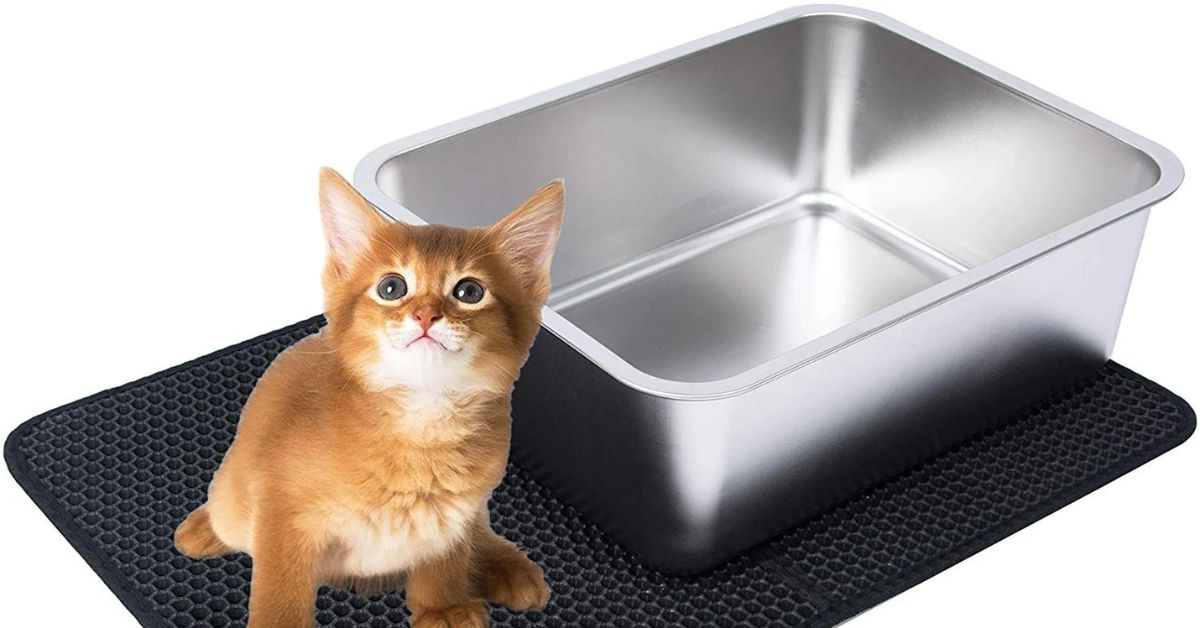Physical Address
304 North Cardinal St.
Dorchester Center, MA 02124
Physical Address
304 North Cardinal St.
Dorchester Center, MA 02124

If you’re a pet owner looking for a reliable, hygienic, and eco-friendly solution for your cat’s litter needs, investing in a stainless steel litter box could be a game-changer. With increasing awareness about pet health, hygiene, and environmental impact, more owners are turning away from traditional plastic options in favor of durable and attractive alternatives. This comprehensive guide will explore everything you need to know about stainless steel litter boxes, their benefits, features, and how to choose the perfect one for your feline companion.
A stainless steel litter box is a modern pet waste collection container made from high-quality, corrosion-resistant stainless steel. Unlike plastic, this material offers a resilient surface that withstands daily use without cracking, chipping, or warping. Designed specifically for cats and other small pets, these litter boxes combine functionality with sleek aesthetics, making them suitable for any contemporary home.
One of the most significant benefits of a stainless steel litter box is its exceptional durability. Unlike plastic models that may crack or stain over time, stainless steel stands up to rough handling, scratching, and repeated cleaning. It can last for years, making it a cost-effective investment in the long run.
Stainless steel is a non-porous material, which means it does not harbor bacteria or odors as easily as porous plastics. This makes **cleaning** and sanitizing much more straightforward. Additionally, stainless steel is free from harmful chemicals such as BPA and phthalates often found in plastic litter boxes, ensuring a safer environment for your pet.
Since stainless steel has a less porous surface, it naturally resists retaining smells. When combined with odor-neutralizing agents or scoopable litter, a stainless steel litter box can significantly reduce unpleasant odors in your home. Proper ventilation designs, like small holes or mesh lids, further enhance odor management.
Choosing stainless steel aligns with environmentally conscious practices, as it is 100% recyclable and often produced from recycled materials. Its modern, minimalist appearance complements contemporary home decor, providing a chic alternative to traditional plastic boxes.
Although the initial purchase price of a stainless steel litter box can be higher than plastic counterparts, its long lifespan and ease of cleaning translate into lower replacement and maintenance costs. Less frequent replacements mean less waste and a greener home environment.
Ensure the size of the litter box suits your cat’s breed and age. Larger cats need more room to turn comfortably, while small kittens require a lower entry point for easy access. Measure available space in your home to select a size that fits without cluttering your living area.
Look for boxes with user-friendly features such as adequately sized entry holes and smooth, removable interiors. These features facilitate easy cleaning and help prevent accidents or discomfort for your cat.
Some stainless steel models incorporate ventilation holes or mesh lids that improve airflow and contain odors. Compatibility with scent-absorbing products like activated charcoal can enhance odor control, keeping your home fresher.
Non-slip bases prevent the litter box from slipping on smooth flooring, reducing accidents. Rounded edges also prevent injuries to your cat or household members.
To maintain hygiene and odors, clean the litter box at least once daily. Remove waste clumps and replenish litter as needed. Regular cleaning prevents bacterial growth and keeps the environment safe for your cat.
Use mild dish soap or specialized stainless steel cleaners. Avoid abrasive scrubbers that could scratch the surface. For stubborn stains or odors, a mixture of baking soda and water is effective.
Although stainless steel is highly resistant to rust, avoid prolonged exposure to moisture or corrosive substances. Dry the litter box thoroughly after cleaning, and consider applying a thin layer of mineral oil to preserve its finish.
For persistent stains, create a paste of baking soda and water, apply, and scrub gently. For odors, placing a small amount of activated charcoal inside the box or using scented liners can help keep smells at bay.
| Material | Pros | Cons |
|---|---|---|
| Plastic | Affordable, lightweight, widely available | Prone to scratches, odor retention, less durable |
| Ceramic | Elegant, easy to clean, non-porous | Fragile, heavy, higher cost |
| Glass | Unique look, hygienic | Brittle, heavy, costly |
| Stainless Steel | Highly durable, hygienic, eco-friendly, modern appearance | Higher upfront cost, heavier weight |
Leading brands often offer high-quality stainless steel litter boxes with various features. Popular models include the AmazonBasics Stainless Steel Cat Litter Box and the Petmate Stainless Steel Litter Pan. Prices range from $30 to over $100, depending on size, design, and additional features. Customer feedback highlights the durability and aesthetic appeal as major advantages.
Incorporating a stainless steel litter box into your pet care routine offers numerous advantages—from enhanced hygiene and safety to environmental benefits. When choosing a model, consider your cat’s size, your home space, and desired features. Proper maintenance, regular cleaning, and selecting quality brands can make this a worthwhile investment that benefits both you and your feline companion.
As pet owners become more environmentally conscious, switching to stainless steel not only improves pet health but also reduces plastic waste, making it an eco-friendly choice for modern households. Don’t hesitate to explore options and find the perfect fit for your pet’s needs.